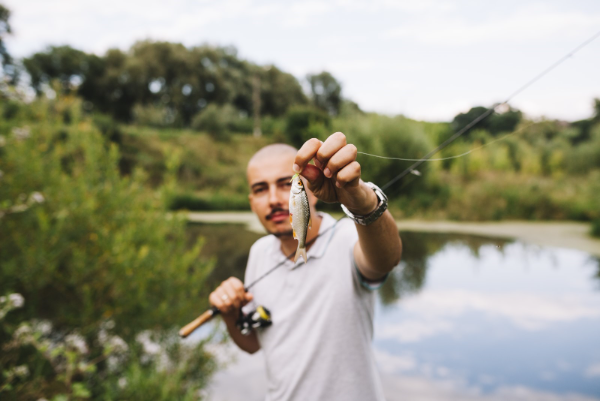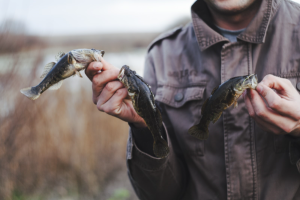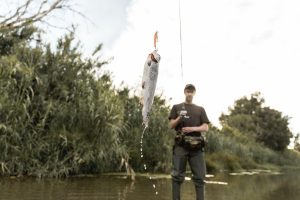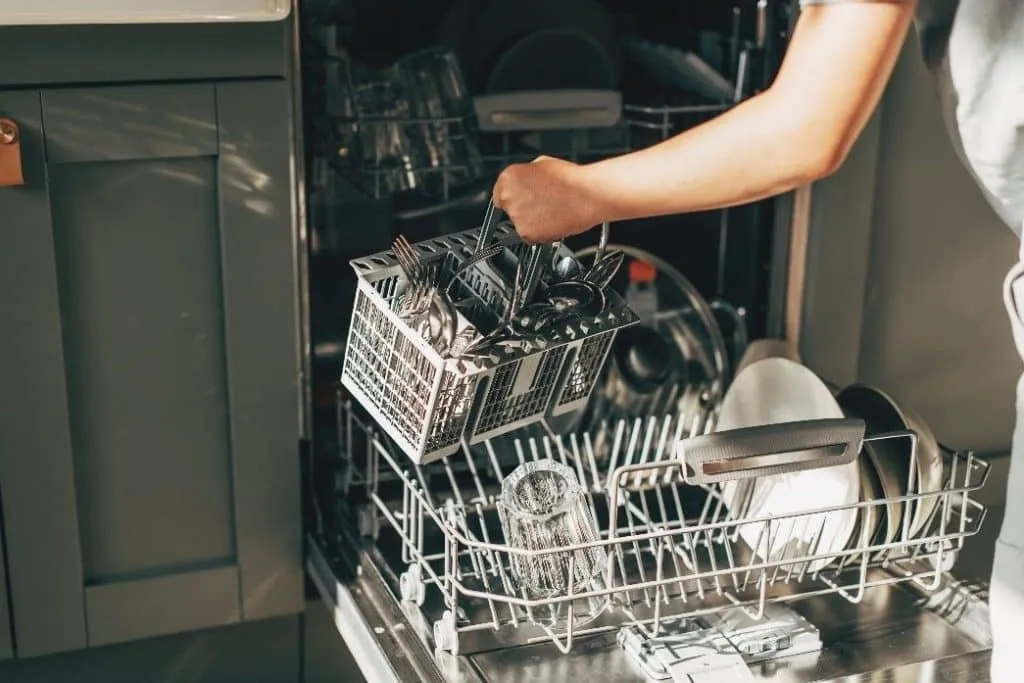Where To Cast Parachute Adams For Trout In Clear Water?

Sunlight dances on the surface, revealing every stone beneath as trout hovers, suspended like a ghost in the liquid glass. Each breath of wind is filled with the scent of pine and the quiet ripple of possibilities.
The trout rises, careful and calculated, inspecting every offering with the discernment of a jeweler. You crouch low, breathe even, and flick a cast so delicate it barely touches the surface.
Riding the current like a natural, the Parachute Adams drifts into sight, its white post shining like a beacon of hope. Revered by seasoned anglers, this famous dry fly is both a mimic and a masterpiece, ideal for clear-water confrontations.
Precision isn’t optional, it’s everything. One mistake and your prey disappears into the shadows. Each cast must be thoughtful, and every drift must be perfect. The difference between casual casts and the catch of the day moment is understanding where to aim.
Let’s put your fly in the right place.
Why the Parachute Adams Works Well in Clear Water?
It’s no wonder the Parachute Adams is a fly angler’s legend in the box; it is the perfect blend of form and function, particularly in clear water where trout see everything.
With its signature white post standing tall, the fly provides excellent visibility to anglers without giving away the game to the fish. When waters are glassy and fish become wary, the Parachute Adams doesn’t just float, it performs.
It’s your quiet ace, the sleek distraction that speaks trout fluently without raising any doubt. In clear water, that subtlety makes all the difference.
Reading the Water: Know Where Trout Hold

Understanding where trout hold is like learning a silent language written in ripples and shadows. In clear water, they’re masters of disguise, positioning themselves in areas that offer both food and cover.
Thus, learning where to cast your Parachute Adams begins with knowing where these smart fish call home.
- Tailouts: Gentle Buffet Line
At the end of a pool, where water slows and shallows before spilling into the next riffle, tailouts become trout feeding stations. Here, insects congregate in a lazy drift, making it easy pickings for hungry fish.
Look for slight rises, dimples, or shadows moving just below the surface. Trout in tailouts are often feeding confidently, perfect targets for a well-placed dry fly.
- Seams: Nature’s Conveyor Belt
Where fast and slow currents converge, seams exist, a magic zone delivering food with minimal effort. Trouts are extremely fond of these edges, saving energy while gorging on whatever the current brings.
Cast just along the seam and allow your Parachute Adams to drift naturally into their path.
- Underwater Structure: Hidden Fortresses
Behind boulders, under submerged logs, or near a sudden drop-off, these are the trout’s secret bunkers. Structure offers protection and ambush points.
Approach quietly and cast upstream, allowing your fly to float into these hidden haunts like a natural snack drifting by.
Approach with Stealth: Positioning for Cast

In clear water, trout don’t miss much, and they definitely don’t forgive careless movement. To catch one, you have to become part of the landscape.
- Move Like a Shadow
Think of yourself as a predator in plain sight. Stay low, crouch if needed, and tread softly. Avoid skyline silhouettes by keeping below the horizon line, trout looking up through the water’s lens will spot an upright figure instantly.
- Let Nature Work for You
Position yourself with the sun at your back only if your shadow doesn’t fall across the water. If it does, shift. Shadows scream danger to trout.
Use bankside trees, boulders, and terrain to break up your outline. If the wind’s blowing, use it to help your cast rather than fight against it. Natural drifts depend on smart positioning.
- Decode the Rise
A gentle sip, a splash, a swirl, each rise form tells a story. Watch closely without staring directly at the fish.
Side glances and peripheral vision help you stay undetected. Spot the rhythm, note the direction, and line up your cast like it’s part of the current’s choreography.
Precision Casting Techniques for Clear Water
In crystal-clear water, casting is no longer just a technique; it’s performance art. Every movement must be precise, and every drift must be intentional. Your cast is your first impression; make it count.
- Upstream vs. Cross-Stream: Know Your Angle
An upstream cast places your fly ahead of you, letting it drift naturally toward wary trout without dragging your line through their line of sight. Ideal when fish are rising ahead and you’re fishing from behind.
A cross-stream cast, on the other hand, gives you a better angle for covering seams and feeding lanes, especially when fish are holding across the current. Just be prepared to mend for a drag-free drift.
- Mend Like a Magician
A drag-free drift is the holy grail. As soon as your fly hits the water, mend the line upstream or downstream (depending on current direction) to prevent unnatural tension. Even a perfect fly won’t fool a trout if it zips across the water like a water-skier.
- Tailor the Cast to the Water
In tight quarters, short, soft presentations keep your fly gentle and realistic. Long casts work in open water but come with risk; more line means more room for error. Always match your cast to the distance and current speed. Precision beats power. Every time.
Prime Spots to Target with Parachute Adams

Clear water may reveal the beauty of a stream, but it also strips away your margin for error. That’s why knowing where to cast your Parachute Adams is just as vital as how you cast it.
- Pocket Water Behind Boulders
Behind each boulder lies a tiny world of calm amidst the chaos. These pockets offer trout shelter from fast current and a prime vantage point to ambush food. A well-placed cast just upstream lets your Parachute Adams drift naturally into this strike zone.
- Foam Lines and Eddies
Follow the foam, it’s nature’s conveyor belt of food. Trout sit just below these bubbly highways, waiting for insects to drift by. Cast slightly above the foam and let your fly ride it down like a real mayfly caught in the current.
- Banks with Overhanging Brush or Grass
Shady, protected, and teeming with insect life, these spots are trout hideouts. Carefully roll-cast or side-arm under the canopy. The Parachute Adams lands softly, mimicking a mayfly dropping from the brush.
- Spring Creek Riffles and Tailwaters
Consistent temperatures and steady flow make these waters trout factories. Riffles oxygenate the water and break up visibility, giving you the perfect cover for a stealthy drift. Tailwaters are ideal for spotting subtle rises, and precision casting here can pay off big.
Finesse Over Force
Success in clear water comes not from power, but from finesse, and no fly embodies that better than the Parachute Adams. Cast with intention, observe with patience, and let practice shape your precision.
Each drift is a conversation between the angler and the trout. Trust your timing, tune into the current, and let the fly do its quiet work.
Sometimes, the softest presentations lead to the biggest rewards.






